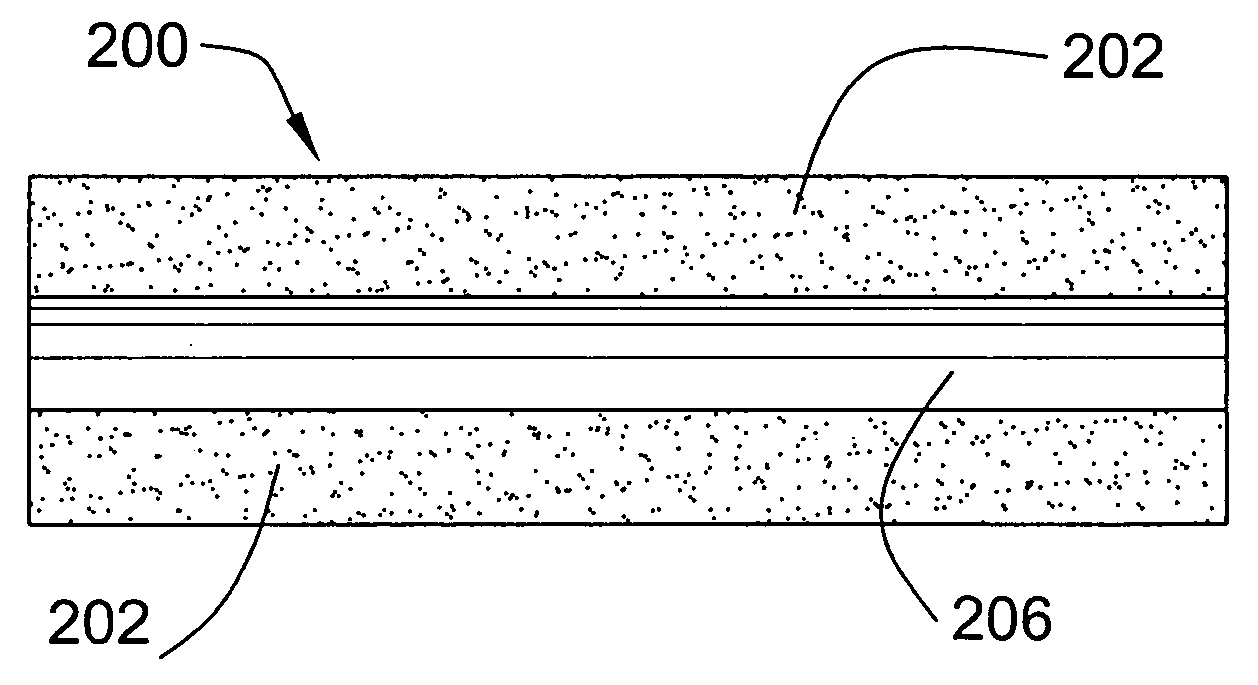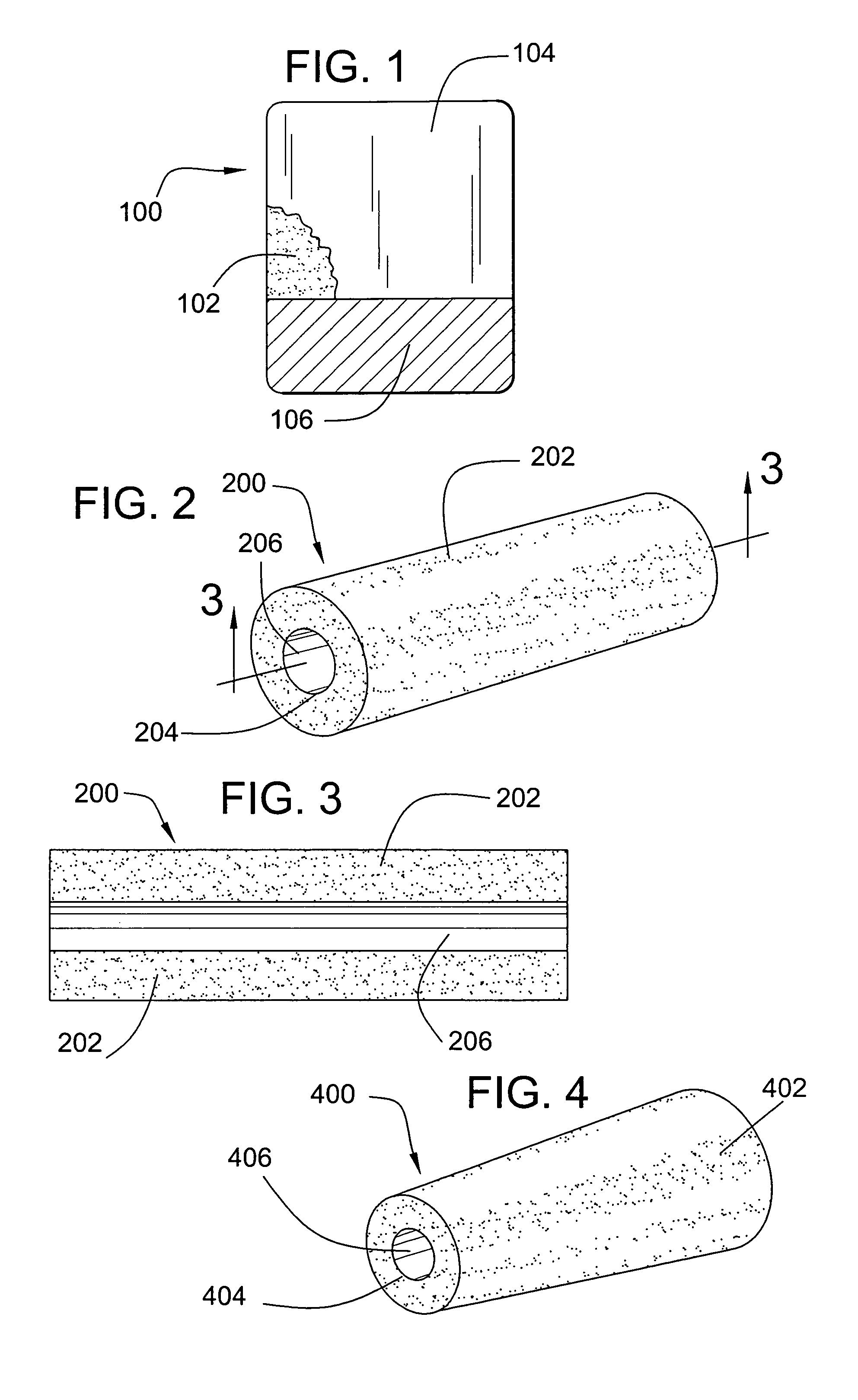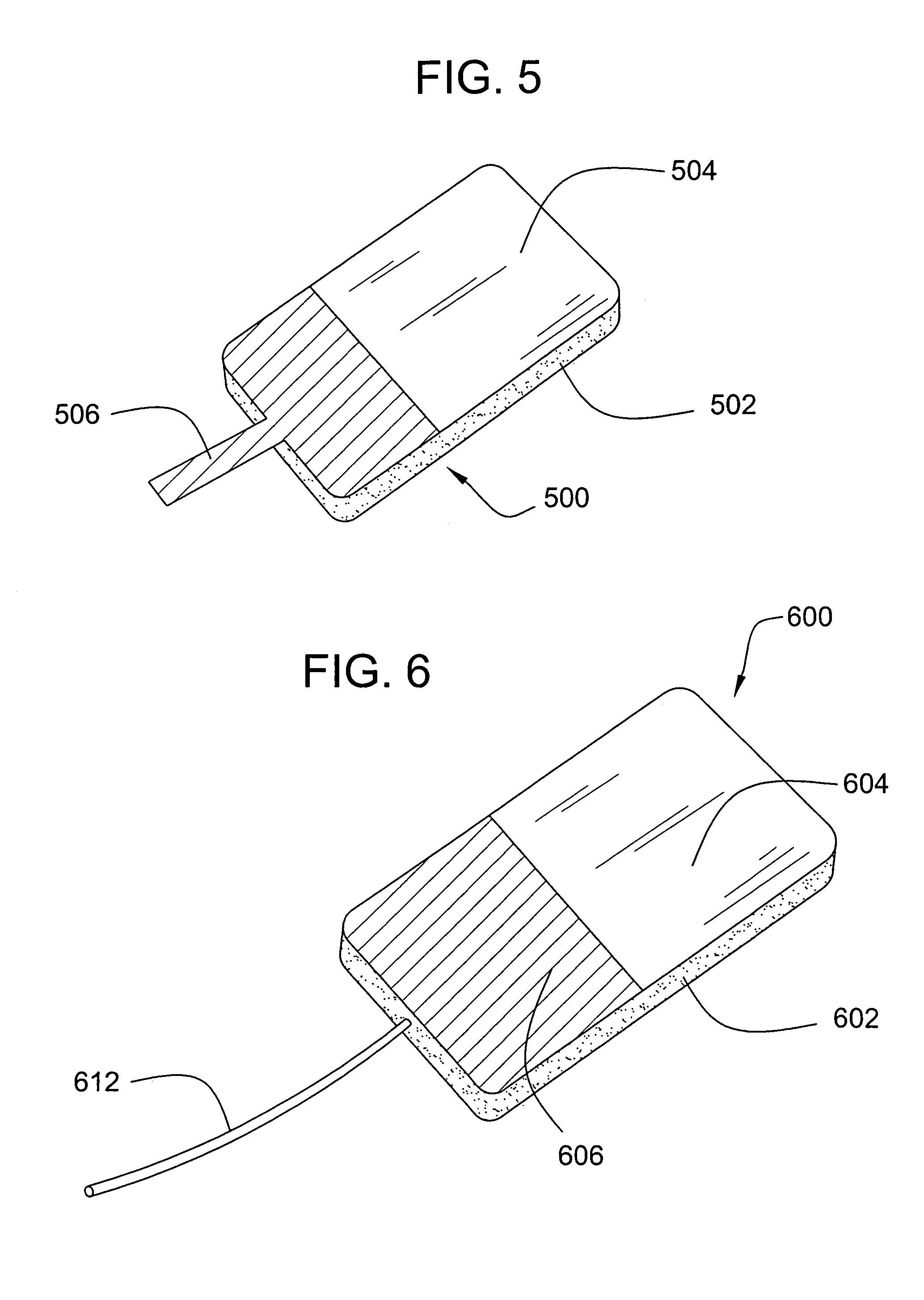Wound dressing suitable for insertion in nasal passages
a wound dressing and nasal passage technology, applied in the field of wound dressings, can solve the problems of difficult removal of cotton-based packing materials from nasal passages, significant pain or discomfort, and packing materials that can be adhered to the nasal mucosa
- Summary
- Abstract
- Description
- Claims
- Application Information
AI Technical Summary
Benefits of technology
Problems solved by technology
Method used
Image
Examples
Embodiment Construction
[0020]The invention provides a wound dressing comprising: (i) a body comprising a flexible, porous polyurethane-based foam and a liquid absorbing component, and (ii) a polymeric film adhered to at least a portion of a surface of the body.
[0021]The body of the dressing comprises a flexible, porous polyurethane-based foam. As utilized herein, the term “flexible” refers to a foam that may be folded over upon itself without exhibiting cracking and / or breaking. The term “porous” refers to a foam having open pores on at least a portion of its exterior surface. Preferably, the dressing comprises a uniformly porous foam (i.e., a foam having pores of substantially the same size uniformly distributed throughout). The foam preferably exhibits only minimal swelling in the presence of liquids. Typically, upon exposure to a liquid, the foam will swell to less than about 3 times its original nominal thickness or diameter, and preferably less than about 2 times its nominal thickness or diameter. Mo...
PUM
| Property | Measurement | Unit |
|---|---|---|
| thickness | aaaaa | aaaaa |
| thickness | aaaaa | aaaaa |
| thickness | aaaaa | aaaaa |
Abstract
Description
Claims
Application Information
 Login to View More
Login to View More - R&D
- Intellectual Property
- Life Sciences
- Materials
- Tech Scout
- Unparalleled Data Quality
- Higher Quality Content
- 60% Fewer Hallucinations
Browse by: Latest US Patents, China's latest patents, Technical Efficacy Thesaurus, Application Domain, Technology Topic, Popular Technical Reports.
© 2025 PatSnap. All rights reserved.Legal|Privacy policy|Modern Slavery Act Transparency Statement|Sitemap|About US| Contact US: help@patsnap.com



